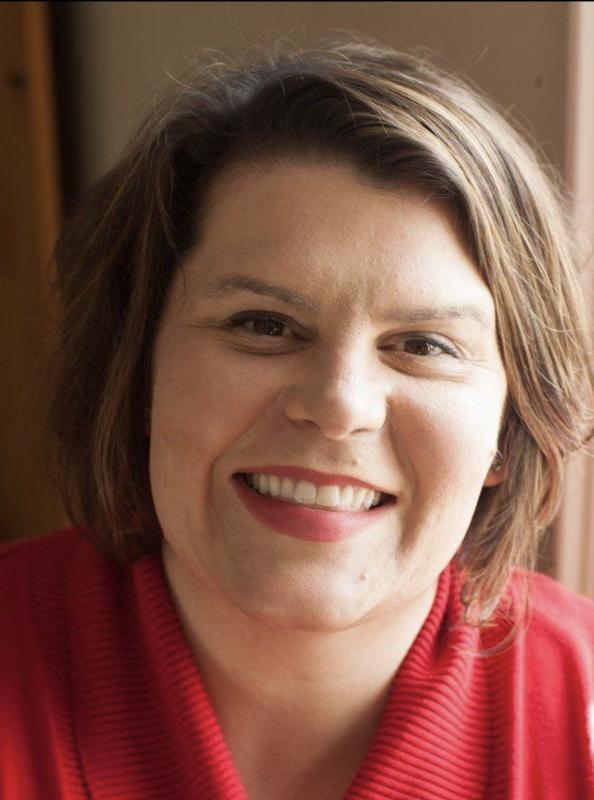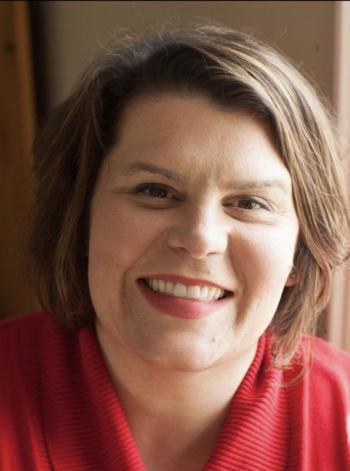Rockport dermatologist continues patient care with telemedicine
ROCKPORT — During the ongoing COVID-19 pandemic, medical practices across the nation have grappled with an ever-changing landscape of health guidelines and recommendations.
For Rockport-based dermatologist Kerry Lavigne, owner of Camden Dermatology and Mohs Surgery, tele-dermatology has proved fruitful to help ensure the well-being of both her employees and her patients.
With the uncertainty and unease the pandemic has wrought, Lavigne said it seemed prudent to follow the most cautious of guidelines and recommendations by limiting in-person medical visits to essential or urgent cases.
“Following Governor Mills’ first recommended closure of nonessential businesses the week of March 25, I decided that it would be best for my staff to relocate off the premises, to remain in the safety of their own homes, and we got very creative with our plan to provide limited in-person visits with myself as the only on-site staff,” Lavigne said. “The procedure that we have is actually working remarkably well and patients have been thrilled with the ability to have a telederm visit and know that if there’s anything critical that needs to be done in person we can still accommodate that. Although we are technically exempt from the business closures as a medical practice, I felt a responsibility to both my staff and my patients to provide as significant level of protection as we could and still provide care for acute dermatologic conditions and concerns that couldn’t be solved with telederm.”
For some services, such as a biopsy or something requiring an in-person evaluation, Lavigne is in the office to the provide services on an as-needed basis.
The surge in shifting to telemedicine across the state eased the decision for Lavigne to also make the shift.
“Simultaneously, there were some significant changes in the regulations, coverage and reimbursement models related to telemedicine during mid-March which made teledermatology a truly equal alternative to in person visits,” she said. “For practices that have ‘brick and mortar’ operations, the previous reimbursement models for teledermatology and telemedicine in general had typically been so low that it was just not financially feasible the incorporate these as alternatives.”
Though telemedicine had not previously been covered by most insurance companies in the state, many are now covering telemedicine visits the same way they cover in-person visits, something that pleases Lavigne.
“It’s truly amazing to me that it took a pandemic for our government and insurance carriers to formally recognize what physicians in particular dermatologists have known for quite some time, specifically that telemedicine is a highly effective tool for many different types of medical complaints and encounters,” Lavigne said. “I just read one headline that stated acceptance of telemedicine advanced 10 years in only two weeks. I think that shows the remarkable power that insurance companies have over how medicine is conducted in this country.”
The shift to telemedicine for Lavigne was also eased by her practice’s patient communications service implement a telemedicine service promised to be user-friendly.
“Since we have been using Klara as a text-based secure communication platform within our business already, it made sense for us to implement this virtual visit tool,” Lavigne said.
Lavigne, so far, has seen a handful of advantages to offering teledermatology sessions.
“Patients love being able to just sign on and have the visit start,” she said. “They don’t have to drive long distances, get a ride, pay for gas, wait in the waiting room or any of those other burdensome aspects of getting to the doctors office. The technology is incredibly easy to use and the video and sound capabilities are superb. In the rare instance I am unable to clearly visualize a lesion through the video portion of the visit, patients can very easily send a captured photo through our Klara platform which can make all the difference in my ability to provide a more concrete diagnosis. All of the details of the visit get charted in the patients regular electronic medical chart which provides for continuity of care through this period. We can even upload the still photos right into their chart.”
In addition to telemedicine providing peace of mind and comfort, Lavigne has discovered a few added perks, and a couple funny moments.
“It’s also been really great to get a sense of patients in their home environment,” she said. “One patient showcased her husband’s beautiful sculpture work, and I’ve gotten to meet many of my patients best furry friends. One day, when I was doing a few tele-dermatology visits from my home, a couple of patients even got to meet my young children which was a little bit unexpected.” (Since then, Lavigne noted she is trying to do most of the sessions from the office.)
Though there have been advantages, Lavigne noted there have been some challenges.
“Our biggest challenge at the moment is not the technical component or the staff component but really the adoption of this visit type on behalf of our patients,” she said. “I think there’s probably several reasons for this including thoughts that this may be only a short lived state of life as well as the fact that many of my patients are seen for detailed skin exams that are not necessarily the most ideally suited for teledermatology. But we can still do your focused exams such as the face, suspicious clinical lesions and manage a very wide range of clinical concerns including acne, rosacea, psoriasis, eczema and even some acute rashes, just to name a few.”
Lavigne’s practice has, partially, been hampered by a low tele-dermatology adoption rate.
“What makes the low adoption rate particularly challenging is that in the absence of significant acceptance of this visit model, we are going to be running into a huge paralyzing bottleneck of rescheduling visits and potentially significant clinical impacts for patients such as delays in detecting concerning skin cancers or other concerns which are best treated in a timely manner,” Lavigne said. “Not to mention the immediate financial impact of having clinical volumes drop greater than 90%. As a medical practice I am focused on the health and welfare of both my patients and my clinical staff but I am also essentially a small business and the financial implications of having such an immediate and significant drop in clinical visits is very stressful.”
Ultimately, Lavigne is doing her best to maintain order as normal as possible, particularly for her staff.
“I have been so proud of my staff and their response to this catastrophe,” said Lavigne. “I will do anything with in my power to keep them employed at the fuller end of their wages, but we remain dependent upon the adoption of teledermatology to achieve this.”
Lavinge’s practice is accepting new patients by tele-dermatolgoy and is encouraging current patients to convert to their existing visit a virtual one to stay as current as possible with their necessary care.
To streamline the shift to tele-dermatology sessions, Lavigne has added a detailed guide to her practice’s website with step-by-step instructions and visual aids to familiarize patients with the process.
Additionally, her medical assistant and support staff, all working from home, call patients a day in advance and do a test telemedicine with patients.
“This has been a huge benefit to the workflow and also to reducing any anxieties that patients may have regarding how the visits go,” Lavigne said.
Like many business owners, Lavigne looks forward to the day some normalcy will be, at least partially, restored. Until then, she will do whatever it takes to make the best of the situation.
“It is my sincere hope that we will be emerging from the risks posed by this pandemic and the burden that the quarantine requirements have placed on both our social and economic societies but I would like our patients to know that should this not be the case, we are still here for them, virtually with smiles and reassurance,” Lavigne said.
Reach George Harvey at: sports@penbaypilot.com.
Event Date
Address
United States



























